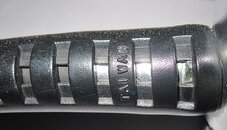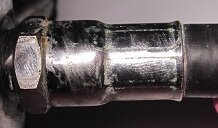HenrikBP
Contributor
So I was replacing some hoses and I remembered this very heated thread.
They say a picture speaks a thousand words.
after 6 months of use, in a commercial environment, with no hose protectors....
View attachment 125725
Corrosion and cracked outer sheaths on all of the hoses without hose protectors.
All of the hoses with the protectors have a similar amount of corrosion, but none have the same cracks in the outer sheath.
These are all primary second stage hoses. Octopus, spg and LPI hoses are showing the beginnings of the same damage.
Thanks, that is an interesting point of reference.
Question: if the hoses have cracks in the outer sheath where they were *not* covered by a hose protector - how does the rest of the hose look like? My guess would be that there are cracks as well - in which case the hose is due for retirement soon anyway - hose protector or not.





